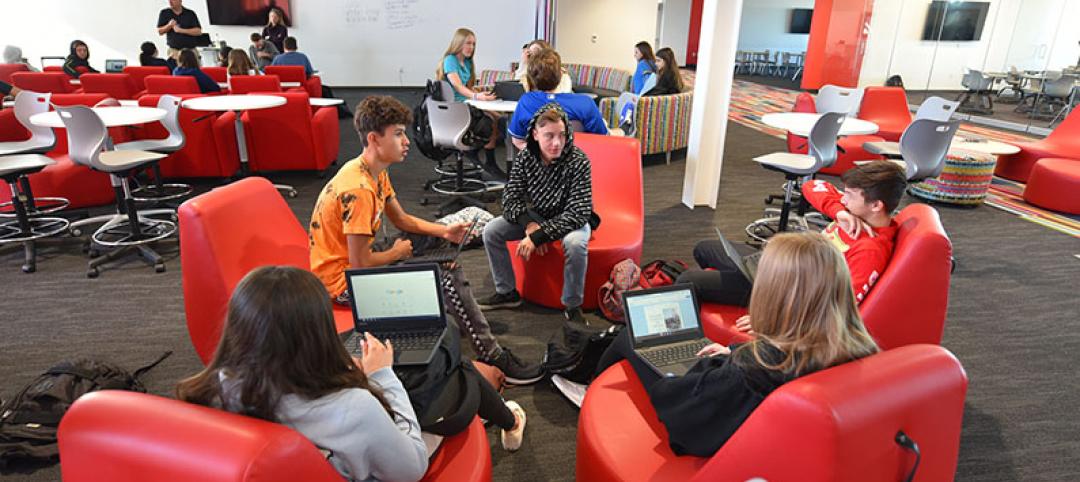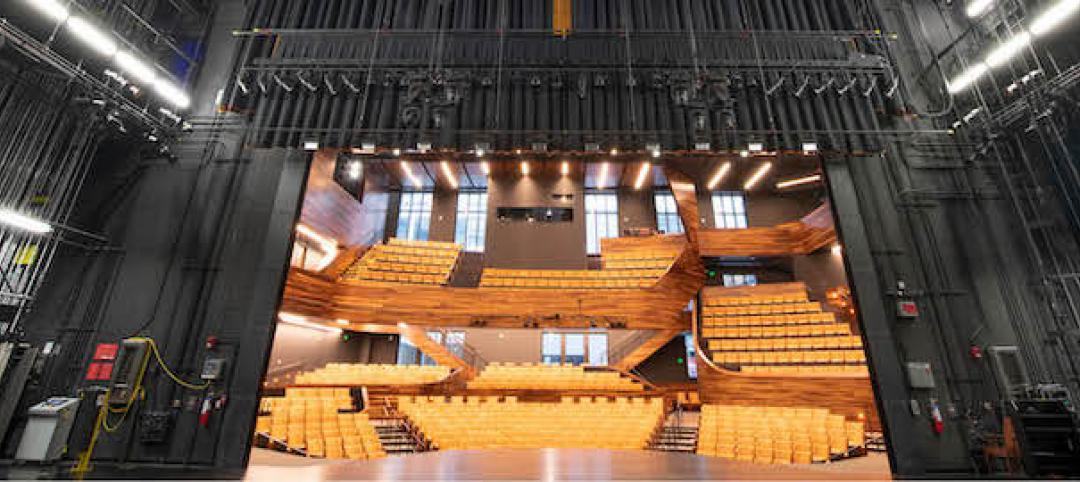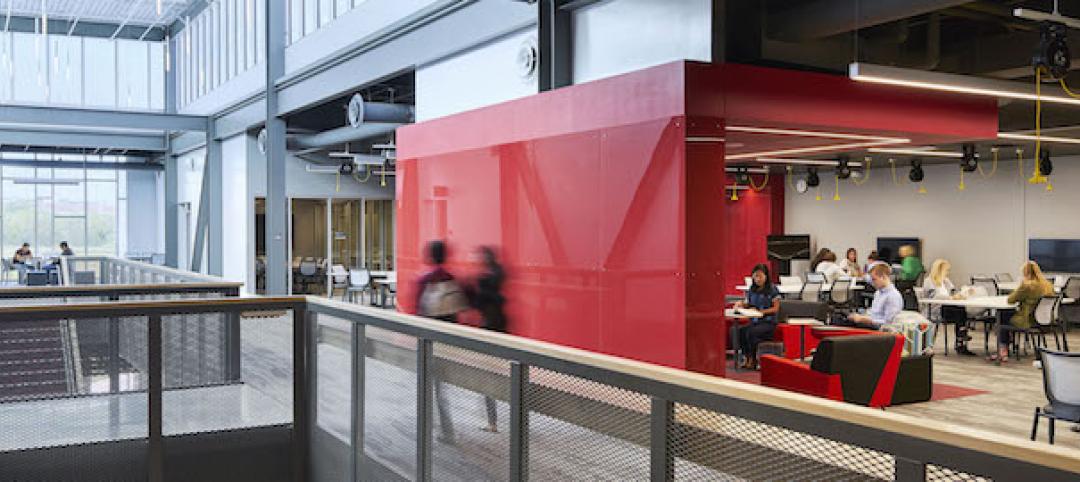In 1999, the oft-cited Heschong Mahone study revealing the importance of daylighting was published. The research correlated the prominence of daylighting to improved elementary student test scores, pushing the pendulum away from artificial into natural light, setting the stage for the sun-lit schools we find common today. At scale, the world shifted its reliance on intuition to depend on evidence supporting the integration of daylight above perceived energy savings or minimizing distractions. I wonder if a sea change around the broader design elements of a school is imminent.
The Innovative Learning Environments and Teacher Change (ILETC) research project of the Learning Environments Applied Research Network at the University of Melbourne recently hosted a think tank at Steelcase in Grand Rapids, Mich. Part of a three-city international tour, the North American think tank represented five U.S. school districts, the Association for Learning Environments, the National School Board Association, the AIA Committee on Architecture for Education, and several universities.
SEARCH FOR EVIDENCE
Empirical data is difficult to obtain in schools due to an inability to control all variables, and to achieve a large sample size. The Heschong Mahone study was conducted through a sample of more than 2,000 classrooms and test scores of some 21,000 students. The results were deeply significant. The ongoing ILETC project has the potential to influence this type of scale, but, as it currently resides in Australia and New Zealand, its potential sample sizes are much smaller.
‘Academic test scores are not the ideal metric. We must instead think beyond and measure areas innovative learning environments support most successfully: student engagement, soft skills, and wellness.’
However, scale is just one way to satisfy the needs of generalizability. Another is control, which spawned a bold idea in the think tank session. Why not create a “living lab” disguised as a typical public school, purpose-built for experimentation? The goal would be to rigorously test the things we have seen work anecdotally–space variety, agile furniture, transparency, technology integration–within typical constraints, such as public education school district standard accountability metrics, for increased generalizability. This scenario would also allow for systematic testing of various professional learning initiatives and tool kits in the transition to innovative learning environments.
What would such a school look like? One school leader in the room gave an example of a school consisting of identically designed wings, each with an assortment of operable partitions allowing for various configurations of the spaces and the degree of openness. One wing could resemble a traditional, single-cell classroom model, another a nearly completely open model, and others falling somewhere in between.
In this environment, we could investigate a range of space variety, connectivity, and openness. Teachers from one wing may be given purposeful training regarding the use of space, while others adopt more organic approaches to the transition. Wings may implement different pedagogical approaches or curricular structures. Timetables could even vary to identify the amount of time needed to fully utilize opportunities provided by the space.
MEASURING IMPACT
Those in the ILETC think tank agreed that academic test scores are not the ideal metric. We must instead think beyond and measure areas innovative learning environments support most successfully: student engagement, soft skills, and wellness.
Many organizations are already developing such measurement tools. DLR Group is one of those, with the ongoing development of its Student- and Educator-Engagement Indexes.
More from Author
DLR Group | Oct 30, 2024
Reasons to reinvent the Midcentury academic library
DLR Group's Interior Design Leader Gretchen Holy, Assoc. IIDA, shares the idea that a designer's responsibility to embrace a library’s history, respect its past, and create an environment that will serve student populations for the next 100 years.
DLR Group | Jan 8, 2024
DLR Group adds executive leaders
DLR Group Chief Executive Officer Steven McKay, AIA, RIBA, announced new executive leaders for the 100% employee-owned, globally integrated design firm.
DLR Group | Nov 30, 2023
A lasting housing impact: Gen-Z redefines multifamily living
Nathan Casteel, Design Leader, DLR Group, details what sets an apartment community apart for younger generations.
DLR Group | Nov 6, 2023
DLR Group opens office in Nashville, Tenn.
DLR Group is expanding its presence in the Southeast with the opening of an office in downtown Nashville, Tenn.—a collaborative effort led by DLR Group Principals Matthew Gulsvig, AIA, LEED AP, and Randall Coy.
DLR Group | Jan 27, 2021
Selecting indoor air quality monitors to maintain healthy spaces
In searching for an indoor air quality monitor, most devices will measure a combination of temperature, relative humidity, carbon dioxide, particulate matter, and total volatile organic compounds.
DLR Group | Sep 1, 2020
The rise of inquiry-based learning in K-12 communities
Inquiry-based education offers a methodology that does not rely solely on the educator being the lead in all learning.
DLR Group | Aug 31, 2020
Reopening campus performance arts centers
Live productions, which offer students the opportunity to hone their skills with true audience feedback, currently pose health risks for students and faculty.
DLR Group | Jun 11, 2019
The power and possibility of adaptive reuse
Building reuse generally offers greater environmental savings than demolition or new construction.
DLR Group | Apr 29, 2019
A look ahead to learning in 2050
Fast forward to the year 2050 and beyond, and imagine what education looks like.
DLR Group | Aug 31, 2018
The building data analytics revolution in three acts
Increased transparency of operational building data is impacting accountability.
















